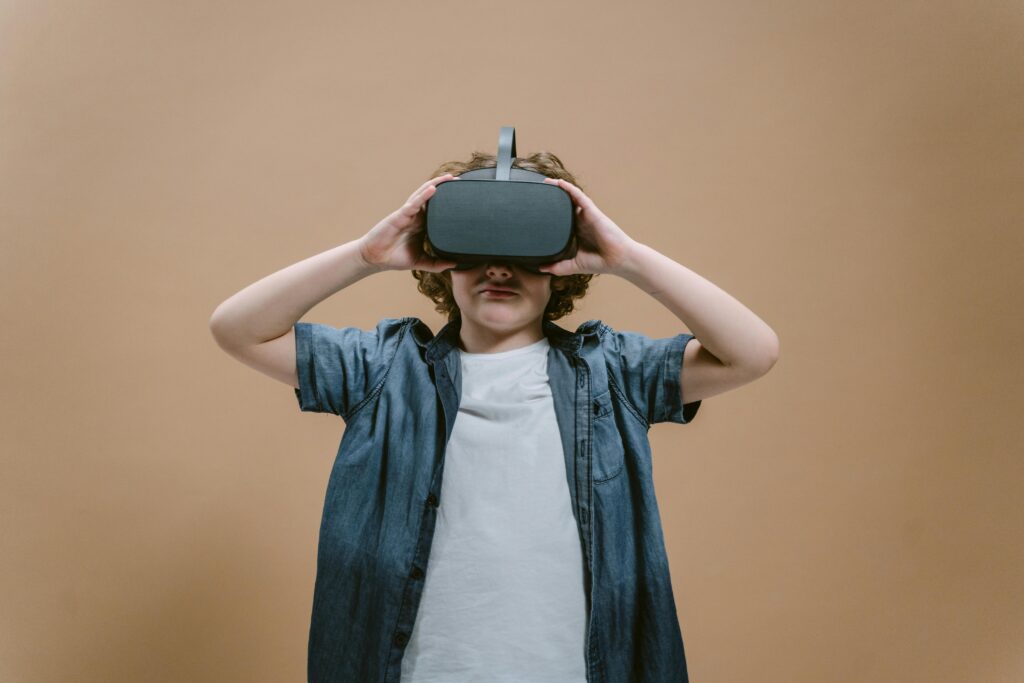
Remember the early days of “virtual reality,” often depicted as clunky headsets and pixelated worlds? Fast forward to today, and Virtual Reality (VR) and Augmented Reality (AR) are no longer just niche technologies for gamers. They’re rapidly evolving, creating genuinely immersive experiences that are blurring the lines between the digital and physical worlds. But what’s truly driving the rise of VR and AR, and how will these transformative technologies shape our future?
Understanding the Difference: VR vs. AR
While often grouped together, VR and AR offer distinct, yet complementary, ways to experience digital content:
- Virtual Reality (VR): VR aims to create a completely simulated environment that can be similar to or completely different from the real world. When you put on a VR headset, you are fully immersed, and your real surroundings are blocked out. Think of it as stepping into a new world.
- Augmented Reality (AR): AR overlays digital information onto the real world. It enhances your view of reality by adding computer-generated elements, such as sounds, videos, or graphics, to your existing environment. Think of it as adding digital layers on top of your world. Pokémon Go was an early, widely popular example of AR in action on smartphones.
The Power of Immersion: Why VR & AR Matter
The core appeal of both VR and AR lies in their ability to deliver immersive experiences that engage our senses in profound ways. This goes beyond traditional screens:
- Enhanced Engagement: Whether it’s exploring a historical site in VR or visualizing furniture in your living room with AR, these technologies make experiences far more interactive and memorable.
- Realistic Training & Simulation: From surgical training for doctors to flight simulations for pilots, VR offers a safe, realistic, and cost-effective environment for practicing complex skills without real-world risks.
- New Forms of Entertainment: VR gaming is reaching unprecedented levels of realism and interactivity. AR is transforming live events, retail experiences, and even social media by blending digital content with our physical surroundings.
- Revolutionizing Design & Collaboration: Architects can walk through virtual buildings before they’re built, engineers can collaborate on 3D models in real-time, and designers can prototype products virtually. This speeds up development and reduces costs.
Current Applications and the Expanding Horizon
The rise of VR and AR is evident in their expanding applications across various sectors:
- Gaming & Entertainment: This remains a huge driver, with sophisticated VR games offering unparalleled realism and AR filters transforming social media interactions.
- Education: Students can take virtual field trips to ancient Rome, dissect a virtual frog, or explore the human body in 3D, making learning incredibly engaging and effective.
- Healthcare: Beyond surgical training, AR assists surgeons by overlaying patient data during operations, while VR helps with pain management, physical therapy, and even treating phobias.
- Retail & E-commerce: AR apps allow customers to “try on” clothes virtually or see how a new appliance looks in their kitchen before buying. This reduces returns and enhances the shopping experience.
- Manufacturing & Enterprise: AR is used for remote assistance, allowing experts to guide on-site technicians through complex repairs. VR is used for industrial design reviews and employee training.
The Future is Blended
The future of VR and AR isn’t about one replacing the other, but rather a gradual blending of the two, leading to a truly mixed reality (MR). As headsets become lighter, more powerful, and less intrusive, we can expect to see seamless transitions between virtual and augmented environments.
This blended future holds immense promise: digital overlays that intelligently assist us in daily tasks, virtual spaces where we can collaborate with colleagues from across the globe as if we were in the same room, and entertainment that feels indistinguishable from reality. The ongoing advancements in hardware, software, and content creation are rapidly pushing these immersive experiences from novelty to necessity, fundamentally changing how we interact with information and with each other.
